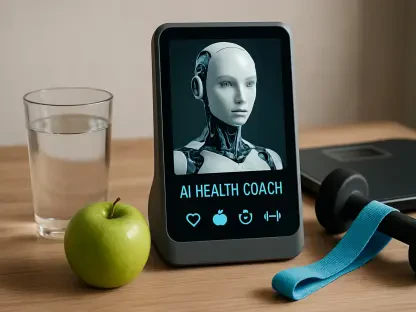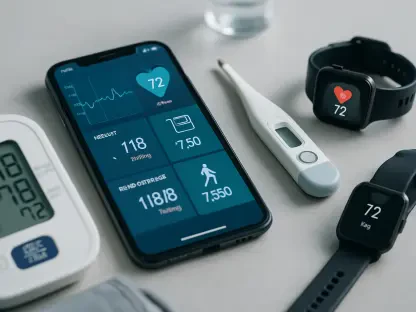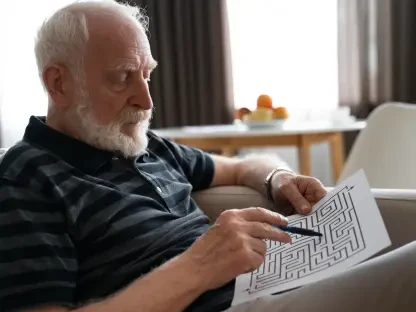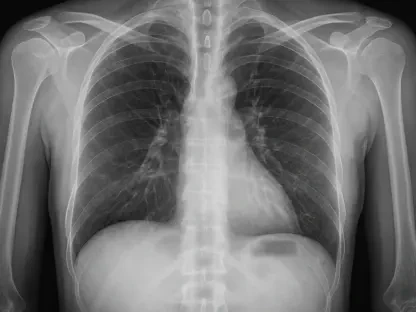In an era where medical education must adapt to global challenges and technological advancements, a pioneering initiative is revolutionizing the training of pediatric radiologists worldwide. The Weekly Virtual Case Review Series has emerged as a transformative solution, addressing the critical need for accessible, high-quality education in a field essential for diagnosing and treating childhood illnesses. By harnessing digital platforms, this program connects trainees from diverse regions, breaking down barriers that once limited access to specialized knowledge. It offers a unique opportunity for aspiring radiologists to engage with complex cases and expert guidance, regardless of their geographical location or economic constraints. This innovative approach not only enhances individual skills but also promises to elevate the standard of pediatric care on a global scale. As healthcare continues to evolve, such virtual initiatives signal a shift toward more inclusive and technology-driven learning environments, setting a new benchmark for medical training.
Overcoming Geographical and Economic Hurdles
The Virtual Case Review Series stands as a beacon of accessibility, ensuring that pediatric radiology education reaches trainees who might otherwise be excluded due to their location or financial limitations. For many in remote or under-resourced areas, attending traditional in-person workshops or conferences is often an insurmountable challenge, involving significant travel costs and time away from clinical responsibilities. This program eliminates those obstacles by delivering sessions directly to participants through online platforms. Trainees from rural clinics to bustling urban hospitals can now access the same high-caliber content, leveling the playing field and fostering expertise where it is most needed. The impact of this inclusivity extends beyond individual learners, as it contributes to better healthcare outcomes for children in underserved communities by equipping local practitioners with critical diagnostic skills.
Beyond the logistical ease, the series is designed with a global audience in mind, accommodating participants across various time zones and cultural contexts. This thoughtful structure ensures that aspiring radiologists in different parts of the world can join sessions at feasible times, making the program truly international in scope. The removal of physical attendance requirements also means that financial barriers, such as the cost of flights or accommodations, no longer dictate who can benefit from specialized training. As a result, a wider pool of talent is nurtured, creating a more diverse and capable workforce in pediatric radiology. This democratization of education not only builds individual competence but also strengthens the global network of professionals dedicated to improving child health through accurate and timely diagnoses.
Building a Collaborative Learning Community
A cornerstone of the Virtual Case Review Series is its focus on fostering collaboration among trainees, replicating the teamwork inherent in real-world medical practice. Through virtual discussions of intricate pediatric imaging cases, participants engage in dynamic exchanges, sharing insights and debating potential diagnoses. This peer-to-peer interaction cultivates a deeper understanding of complex scenarios, as learners benefit from diverse perspectives and collective problem-solving. Such an environment mirrors the collaborative nature of hospital settings, where radiologists often work alongside other specialists to ensure optimal patient care. By embedding this teamwork into the training process, the series prepares participants for the interdisciplinary demands they will face in their careers.
Equally significant is the sense of community that emerges from these virtual interactions, connecting trainees across continents. Participants form professional bonds that transcend borders, creating a supportive network that can be invaluable throughout their careers. In a field like pediatric radiology, where emotional and intellectual challenges can be intense, having a global cohort to lean on for advice or shared experiences is a powerful asset. This camaraderie also encourages a culture of continuous learning, as trainees are motivated to contribute to and learn from a worldwide pool of knowledge. The ripple effect of these connections is profound, enhancing not just individual diagnostic accuracy but also the collective ability to address pediatric health challenges on a broader scale.
Leveraging Technology for Immersive Learning
Technology serves as the backbone of the Virtual Case Review Series, transforming how pediatric radiology education is delivered and experienced. With access to high-resolution imaging tools and interactive digital platforms, trainees can examine cases with exceptional detail, gaining a clearer understanding of subtle diagnostic nuances. These advanced resources make sessions more engaging, turning theoretical knowledge into practical skills through vivid, hands-on exploration. Furthermore, the integration of such tools aligns with the growing reliance on digital diagnostics in healthcare, ensuring that participants are not merely learning about pediatric imaging but are also becoming proficient in the technologies shaping modern medical practice. This forward-thinking approach positions them as adaptable professionals ready for industry advancements.
In addition to enhancing engagement, the technological framework of the series prepares trainees for a future where remote consultations and digital collaboration are increasingly common. Familiarity with online platforms and imaging software equips them to navigate telemedicine scenarios, which are becoming integral to providing care in both urban and rural settings. This exposure is particularly crucial in pediatric radiology, where timely and accurate diagnoses can significantly impact young patients’ outcomes. By embedding technology into the learning process, the program ensures that participants are not just keeping pace with current standards but are also ahead of the curve, ready to tackle emerging challenges with confidence. The result is a generation of radiologists who are as comfortable with digital tools as they are with clinical analysis.
Bridging Theory and Practice Through Simulation
One of the standout features of the Virtual Case Review Series is its ability to simulate real-world clinical challenges, bridging the often-wide gap between theoretical learning and practical application. Each session is structured to replicate the high-pressure environment of a hospital, where trainees must analyze complex pediatric cases, formulate diagnoses, and justify their reasoning under time constraints. Immediate feedback from experts and peers further enriches this process, allowing participants to refine their critical thinking skills in real time. This hands-on approach addresses a common shortfall in traditional education models, where opportunities for such immersive practice are limited, ensuring that learners gain the confidence to handle the unpredictable nature of their future roles.
The diversity of cases presented in the series also plays a vital role in preparing trainees for the multifaceted demands of pediatric radiology. From rare pathologies to common conditions, participants encounter a broad spectrum of scenarios, each requiring unique diagnostic strategies and imaging techniques. This comprehensive exposure ensures they are not narrowly focused but are instead versatile practitioners capable of addressing varied clinical situations. By simulating the complexities of real patient care, the program instills a readiness to make sound decisions even in ambiguous or high-stakes contexts. Such preparation is invaluable, as it directly translates to improved accuracy and efficiency in actual medical settings, ultimately benefiting the young patients who rely on precise diagnoses for effective treatment.
Paving the Way for Future Innovations
Reflecting on the impact of the Virtual Case Review Series, it is evident that this initiative marks a significant turning point in pediatric radiology education. Its success in overcoming barriers of access and fostering a collaborative spirit among trainees demonstrates a viable path for addressing disparities in medical training. The seamless integration of technology into learning sessions also sets a precedent for how digital tools can enhance both engagement and practical skill development. By simulating real clinical challenges, the program ensures that participants are not just theoretically sound but also practically adept, ready to make a tangible difference in child healthcare.
Looking ahead, the legacy of this series offers actionable inspiration for further advancements in medical education. Stakeholders should consider expanding similar virtual platforms to other specialties, tailoring content to regional health needs while maintaining global standards. Investing in even more sophisticated technologies, such as artificial intelligence for case analysis, could amplify learning outcomes. Additionally, continuous feedback from past participants can refine these programs, ensuring they evolve with the field’s demands. The path forward lies in scaling such innovative models, ultimately creating a more equitable and skilled healthcare workforce dedicated to improving lives worldwide.









